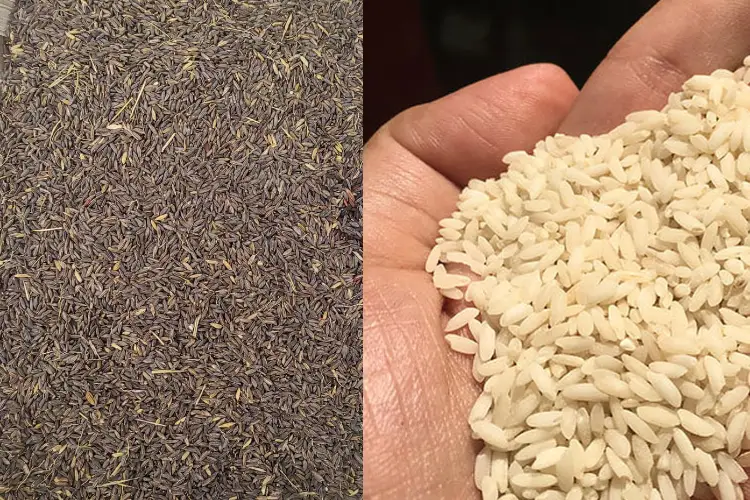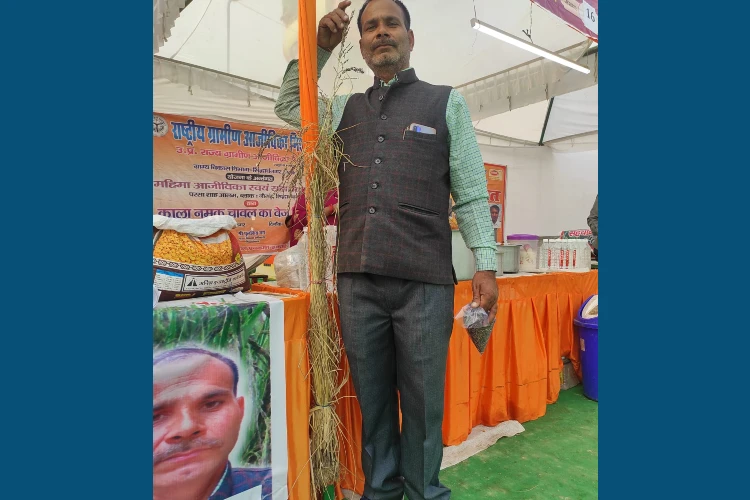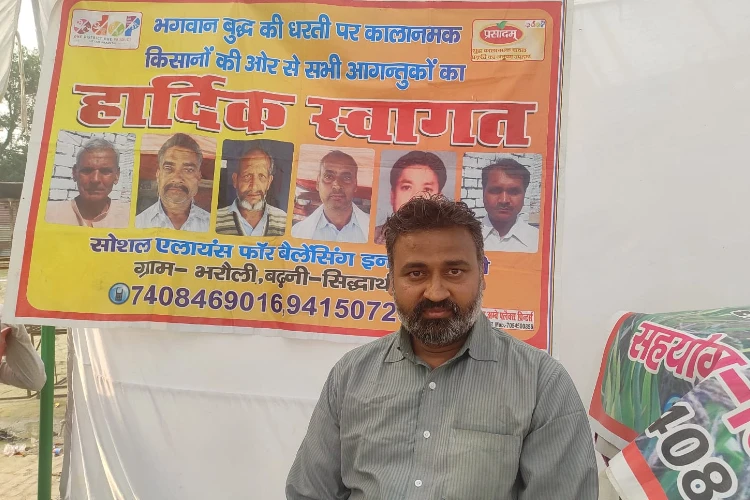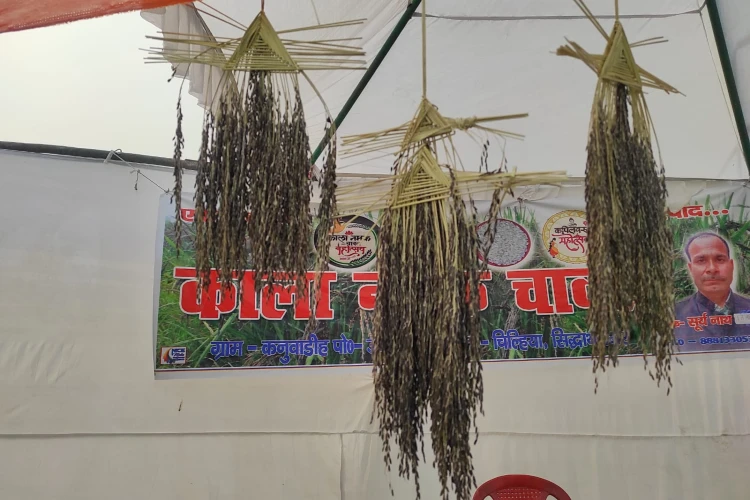
Shaista Fatima/ New Delhi
Situated on the India-Nepal border, Siddarthnagar, a remote but a very famous district of Uttar Pradesh, is not only known for being the hometown of Lord Buddha, it’s equally famous for an exotic variety of rice called Kalanamak (Black Salt). Though the grains are white in colour, it is the husk that is black.
Its interesting name is derived from its black husk (kala meaning black) and namak meaning salt because of the salty taste it leaves when someone bites the whole grain (with husk).
Suryanath Mishra, a local farmer said, "The paddy of this variety grows around 4 to 5 feet, which is much taller than normal varieties.” Therefore, after maturing, it tends to fall making its handling challenging for the farmers.

Suryanath Mishra poses with the 4-5 feet tall husk in the 2021 Kapilvastu Mahotsav, Siddharthnagar, Gorakhpur
Also known as the Black Pearl Rice, this is an aromatic variety; even in raw form, it gives away a husky aroma.
Besides, it is believed to have many health benefits.
Kalanamak rice was found to have been cultivated almost 3000 years back in the Buddhist period (600 BC) or even before that.
In the excavations of Aligarhwa, specimens of Kalanamak rice grains were found. Aligarhwa that is part of today’s Siddharthnagar was earlier Kapilavastu, the kingdom of King Suddhodana, father of Siddharth Gautam, who later attained enlightenment and was called Lord Buddha, he went on to found Buddhism. After attaining enlightenment, it’s said that one day, Lord Buddha was on his way to Kapilavastu, the kingdom where he was born as the prince. During his journey through the Terai region as he was crossing the Bajha jungle, he was stopped at the Mathla village by locals, who requested him for Prasad (blessings).
It was then that Buddha gifted them the scented rice grains with unusual black husk.
He asked the villagers to sow the grains that he said will produce rice with a special aroma that would always remind people of him. Locals say when the rice variety is sown elsewhere, it loses its aroma and quality.
The first effort at the conservation of Kalanamak was made by the Englishmen William Pepe, J H Hemprey, and Edcan Walker (Zamindars of Alidapur, Birdpur, and Mohana respectively) during the British Raj.
They built four reservoirs at Bajha, Marthi, Moti, and Majhauli to produce Kalanamak in large quantities. They not only produced this variety for their consumption but transported it to England from Uska-Bazar mandi, passing through Dhaka (now in Bangladesh) via the sea route.
Of late the State government has launched schemes by engaging doctors, experts, and scientists to boost its production. The farmers are getting a higher yield and profit from their production.
Suryanath says, “Scientists have taught us the technique of seed preservation and multiple harvesting for higher yield, they are also helping us in understanding the quality of soil for greater production globally...”

Deenanath, the journalist turned farmer who is now promoting Kalanamak rice under ODOP scheme of State Government
A journalist turned farmer Deenanath says,“After government’s One district One product scheme the production has increased manifolds…”
Thus, he is currently not only cultivating Kalanamak rice but is also trading, he says, “this variant is rich in many nutrients and has more value amongst economically stronger sections…”
Deenanath purchases Kalanamak rice from farmers and takes it to cities where people can afford it.
The cooked Kalanamak rice meets many important parameters of quality in the international rice market. The rice variety has a high amount of micro-nutrients such as Iron, Copper. Magnesium and Zinc.
Suryanath says, "Kalanamak rice is a healthy option for children and elders, as it is naturally sugar-free."
Studies reveal that regular intake of Kalanamak rice prevents diseases like Alzheimer's and others caused due to Iron and Zinc deficiencies.
The low glycemic index rice variety is also known as sugar-free rice. With its glycemic index being less than 55, it’s quite low in comparison with the other basmati rice varieties and is beneficial for people with diabetes.
Kalanamak rice is said to outshine even the most exclusive Basmati rice in all quality traits except grain length. It’s non-basmati rice with short to medium grain length. The aroma of Kalanamak rice - a gift of Gautam Buddha, - is stronger than all Basmati varieties.
The elongation of the cooked Kalanamak grain - one of the most important traits in the international rice market - is 40% greater than Basmati rice. Cooked Kalanamak rice is softer and fluffier than the other rice varieties.

The corn of Kalanamak rice
With the efforts of the Government of India, the Kalanamak got the Geographical Tag (GI) tag in 2013.
It was also featured in the book Speciality Rices of the world by the Food and Agriculture Organization (FAO) of the United Nations.
